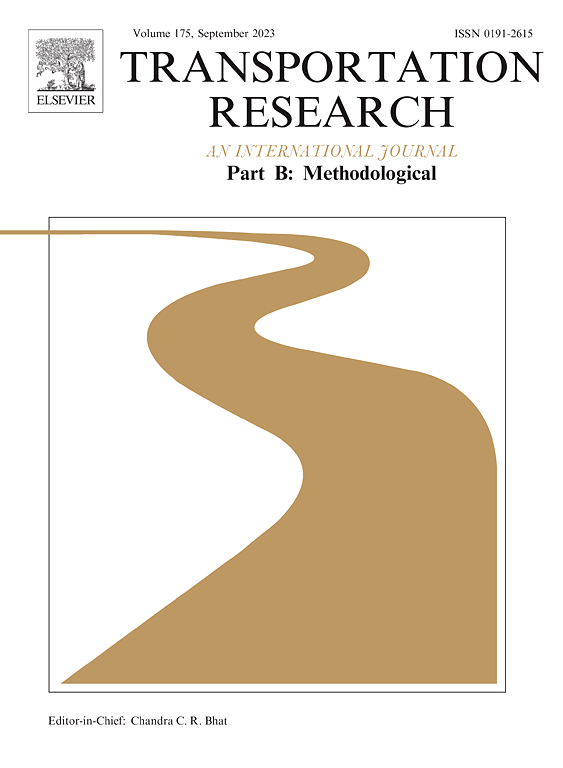自动驾驶时代的安全、责任和保险市场
IF 6.3
1区 工程技术
Q1 ECONOMICS
引用次数: 0
摘要
本文探讨了与自动驾驶时代的安全和保险有关的两个基本问题。首先,我们探讨了基础设施辅助自动驾驶下的安全和责任问题。在这种环境下,汽车制造商提供汽车自动驾驶技术,而基础设施支持服务提供商(ISSP)提供智能基础设施服务。此外,客户可以从上述任何一方获得事故保险,也可以从传统汽车保险公司获得事故保险。我们研究了市场结构对安全和事故保险的影响,结果表明,在选择安全等级时,综合垄断会提供全额保险,并充分考虑事故成本。然而,在纳什环境下,即使获得了全面覆盖,缺乏协调也会导致汽车制造商将事故成本部分内部化。此外,还可能存在多种均衡,其中一些是不可取的。我们的研究表明,无论是在有传统保险还是没有传统保险的情况下,适当的责任规则都能在纳什设置下产生最佳安全水平。我们的第二个问题涉及在基础设施辅助自动驾驶时代,传统汽车保险的作用和福利效应。我们的分析表明,当事故成本是已知的,且所有可能的事故情况都是可签约的,那么该行业对于最优保险并不是必需的。事实上,它们的存在甚至会损害安全性,尽管它能确保对事故的全面保障。当只有为汽车制造商和 ISSP 设定责任上限的保险合同时,在垄断环境下,遗留保险可能会损害福利。这凸显了市场结构在评估自动驾驶时代保险业未来发展中的重要作用,并为未来这方面的研究奠定了基础。本文章由计算机程序翻译,如有差异,请以英文原文为准。
Safety, liability, and insurance markets in the age of automated driving
This paper investigates two fundamental questions related to safety and insurance in the age of automation. First, we touch upon the question of safety and liability under infrastructure-assisted automated driving. In such an environment, automakers provide vehicle automation technology while infrastructure support service providers (ISSPs) provide smart infrastructure services. Additionally, customers can receive coverage for accidents from either of these actors but also from legacy auto insurers. We investigate the effect of market structure on safety and accident coverage and show that an integrated monopoly provides full coverage and fully accounts for accident costs when choosing safety levels. However, in the Nash setting, even though full coverage obtains, lack of coordination leads to partial internalization of accident costs by the automaker. Moreover, multiple equilibria might exist, some of them undesirable. We show that, both in the presence and absence of legacy insurance, an appropriate liability rule can induce optimal safety levels under the Nash setting. Our second question concerns itself with the role and welfare effects of the availability of legacy auto insurance in the age of infrastructure-assisted automated driving. Our analysis shows that the industry is not necessary for optimal coverage when the cost of accidents is known in advance and all possible accident scenarios are contractible. In fact, their presence can even harm safety, even though it ensures full coverage for accidents. When only insurance contracts with capped liability for automakers and ISSPs are available and in a monopolistic environment, legacy insurance potentially harms welfare. This highlights the important role of market structure in assessing the future of insurance in the age of automated driving and lays the groundwork for future investigations in this direction.
求助全文
通过发布文献求助,成功后即可免费获取论文全文。
去求助
来源期刊
CiteScore
12.40
自引率
8.80%
发文量
143
审稿时长
14.1 weeks
期刊介绍:
Transportation Research: Part B publishes papers on all methodological aspects of the subject, particularly those that require mathematical analysis. The general theme of the journal is the development and solution of problems that are adequately motivated to deal with important aspects of the design and/or analysis of transportation systems. Areas covered include: traffic flow; design and analysis of transportation networks; control and scheduling; optimization; queuing theory; logistics; supply chains; development and application of statistical, econometric and mathematical models to address transportation problems; cost models; pricing and/or investment; traveler or shipper behavior; cost-benefit methodologies.

 求助内容:
求助内容: 应助结果提醒方式:
应助结果提醒方式:


